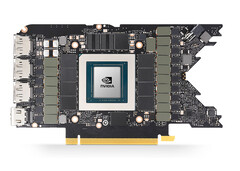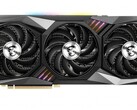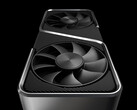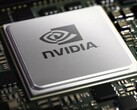Nvidia RTX 3080 Founders' Edition: analyzing the pros and cons based on the mixed reception from the first official reviews

The review NDA for Nvidia’s RTX 3080 Founders’ Edition cards was finally lifted yesterday and the reception of all the benchmark data flooding from more than 70 reputable sites was mixed to say the least. In a nutshell, the RTX 3080 FE is a solid product for gamers looking to improve performance in 4K games, but the claims Nvidia made in the initial reveal appear to be misleading.
Just what exactly was misleading about the presentation given by Nvidia CEO Jensen Huang a few weeks ago? For the most part, the claim that the RTX 3080 FE offers double the performance of an RTX 2080 appears to be dismissed by many of the official tests. Theoretically speaking, the RTX 3080 has double de CUDA cores, so it could be twice as fast. However, the reality of the official tests shows that the RTX 3080 FE is ~39% faster than the RTX 2080 FE 8G and ~24% faster than the RTX 2080 Ti 10G as an average for the 1080p / 1440p / 4K resolutions. Non-averaged results show a higher variance. We can see the RTX 3080 reaching 100% improved performance over the RTX 2080 in select games, yet other games show only a 27% performance increase, while the difference between the RTX 3080 and the RTX 2080 Ti varies between 50% and 17%.
The Digital Foundry tests that were immediately released after the presentation were showing cherry-picked tests that had ray tracing turned off (the Battlefield V tests) because RT requires more than 10 GB of VRAM in 4K, which still is the amount of RAM of the RTX 3080 cards. To mitigate this problem, Digital Foundry showed non-RT tests that require only just above 8 GB of VRAM. Thus, another issue with the RTX 3080 FE cards is that 10 GB of VRAM does not appear to be enough for 4K games with RT enabled, even though the GPUs are praised for the overall 4K performance. We are seeing instances in the recent official tests where the RT performance is clearly gimped despite the improved RT cores. Rumor has it that a 20 GB version of the RTX 3080 SKU will be available some time in the next few months, but the price point will surely be substantially higher.
Some reviewers argued that we should not really compare the RTX 3080 FE with the RTX 2080 Ti because the launch price points are totally different. This is a valid concern, but, since there is no RTX 3080 Ti for now, we still need to compare the top models (no, the RTX 3090 is not replacing the RTX 2080 Ti, in this case, and the $1,500 price point proves this). Now, we must also consider that the RTX 3080 is using 30% more power and this can be corroborated with the averaged performance difference over the RTX 2080 and the RTX 2080 Ti. This increased power consumption will clearly not be sustainable for the laptop variants, meaning that the mobility versions could show lower performance gains over the Turing generation.
Overall, it looks like the RTX 3080 FE could be a decent deal for $700, at least for the performance combined with the new features like the RTX IO, even if Nvidia starts slashing prices in half for all the Turing cards. Then again, the FE models will be very scarce in the next few months, hence maybe it wouldn’t be a good idea to sell those Turing cards just yet. The AIB models will surely see increased supplies, but they will be priced at least $50 higher than the FE cards, and we heard some rumors suggesting that Nvidia saved the best chips for the FE models, leaving the AIB cards performing somewhat worse at stock clocks (NDA for AIB cards is lifting today and we will see if this is indeed true). Moreover, AMD is soon launching its Big Navi cards, so it may be more prudent to wait and see how those models perform and then decide what to buy.









